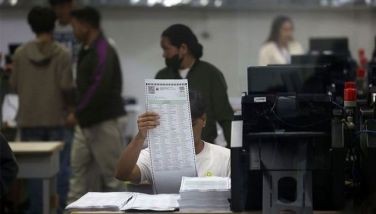#Journeyto30 A coming of age
MANILA, Philippines – It was Friday, June 12, 1998, a public holiday. Thousands of spectators flocked to Rizal Park awaiting the start of festivities for the Philippine Centennial Year celebrations.
They came by the busloads – couples, families, friends, even whole villages – donning caps, holding umbrellas and wearing Filipiniana attire amid the morning heat. Others wore the nation’s colors and carried various sizes of Philippine flags.
It was a field day for many, and the beginning of a long weekend. They laid mats and cardboard on the grass, brought out packed lunch in Tupperware and exchanged small talk.
For some, the park became an instant classroom for parents to give impromptu lectures to their children on Philippine history, culture and tradition.
One parent, Elizabeth Montecillo, brought her two sons and a nephew so she could tell them about the country’s heroes and the important events of the past. “Earlier, they inquired about the Rizal Monument,” she said. “It’s good for them to learn history at an early age.”
The children had a lot to look back to; it was, after all, 100 years of Philippine history. The festivities commemorated the day when Filipino revolutionaries, led by then-president Emilio Aguinaldo, declared the country’s independence from Spanish colonial rule in Kawit, Cavite on June 12, 1898.
A 42-float parade depicted the country’s history during the celebrations at Quirino Grandstand, which was witnessed by then-president Fidel Ramos, vice president Joseph Estrada, members of government, the diplomatic corps, and other guests.
One float featured a life-size caravel, which showed the arrival of the Spanish colonizers in 1521 led by explorer Ferdinand Magellan. A mock battle was performed reenacting the Battle in Mactan between Magellan and the island’s natives.
The 300-year Spanish colonial rule was portrayed in the succeeding floats. It showed the country’s conversion to Christianity, the people’s enslavement to serve the Spanish empire’s economic needs, the revolts against colonial rule, the period of nationalist enlightenment, and the bloody revolution that it brought forth.
At the apex of the parade, a two-story replica of the Aguinaldo Mansion slowly made its way along the parade grounds. On the balcony, actor Ramon “Bong” Revilla Jr., an actor who starred in numerous action movies, played the part of President Aguinaldo.
With a solemn expression, Revilla held the flag from a long pole as he stood along with two other actors, Dante Rivero and Juan Rodrigo, who read the Declaration of Independence. When the declaration was read, he slowly waved the flag to the cheers of spectators wearing farmer costumes.
He then went downstairs, walked out of the mansion with the flag, and went up the stage to the awe of government dignitaries. As the drums rolled, Revilla handed the flag to Ramos, who then raised it with one hand before planting it on a stand at the stage.
Ramos had reenacted the same event from the balcony of the Aguinaldo Mansion in Kawit, Cavite, earlier that day.
In his speech during the celebrations, Ramos addressed the crowd. “Today, we have grown into the responsibility and the glory of nationhood. We are prepared to account for ourselves in the global community. We have begun to make our own history.”
“We, Filipinos, are rejoicing in our coming of age — in the final proof of our ability to understand, to use, and to protect the liberty our heroes won for us a century ago,” he said.
The celebrations culminated with a military parade that showcased our armed forces’ might, including a fly-by of air force jets. The evening was capped by a 30-minute fireworks display at Manila Bay — the largest and longest the country has seen — in the colors of the republic: red, white, yellow and blue.
A few years after the country celebrated its centennial, the House of Representatives impeached an incumbent president for the first time. When the Senate failed to convict the impeached president, he was toppled through yet another show of mass protests at EDSA. The nation put into power its second woman president, whose term was marred by three coup attempts and allegations of corruption and electoral sabotage.
Then, in 2010, it put into power the son of democracy icons that ignited the 1986 People Power Revolution. While the country enjoyed relative economic growth and the administration enjoyed record approval ratings, it faced lingering problems concerning corruption, a communist rebellion, insurgencies in Mindanao, and prevailing criminality.
Now there are people clamoring for a return to authoritarian rule and impunity under the convoluted premise of instilling discipline in a society allegedly made corrupt by its democratic principles – as if our current problems are the result of our freedom to choose, instead of our flawed choices.
With these developments, one must ask: “Have we, as a nation, really come of age?”
- Latest
- Trending































